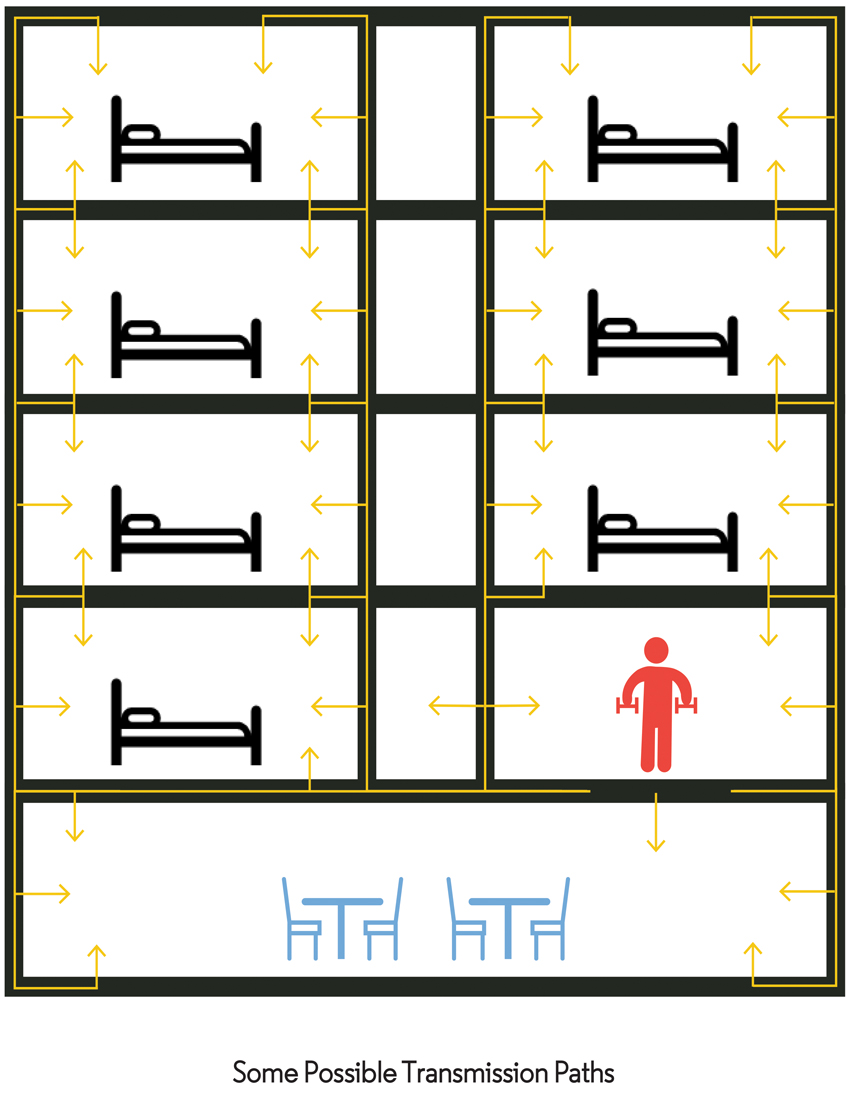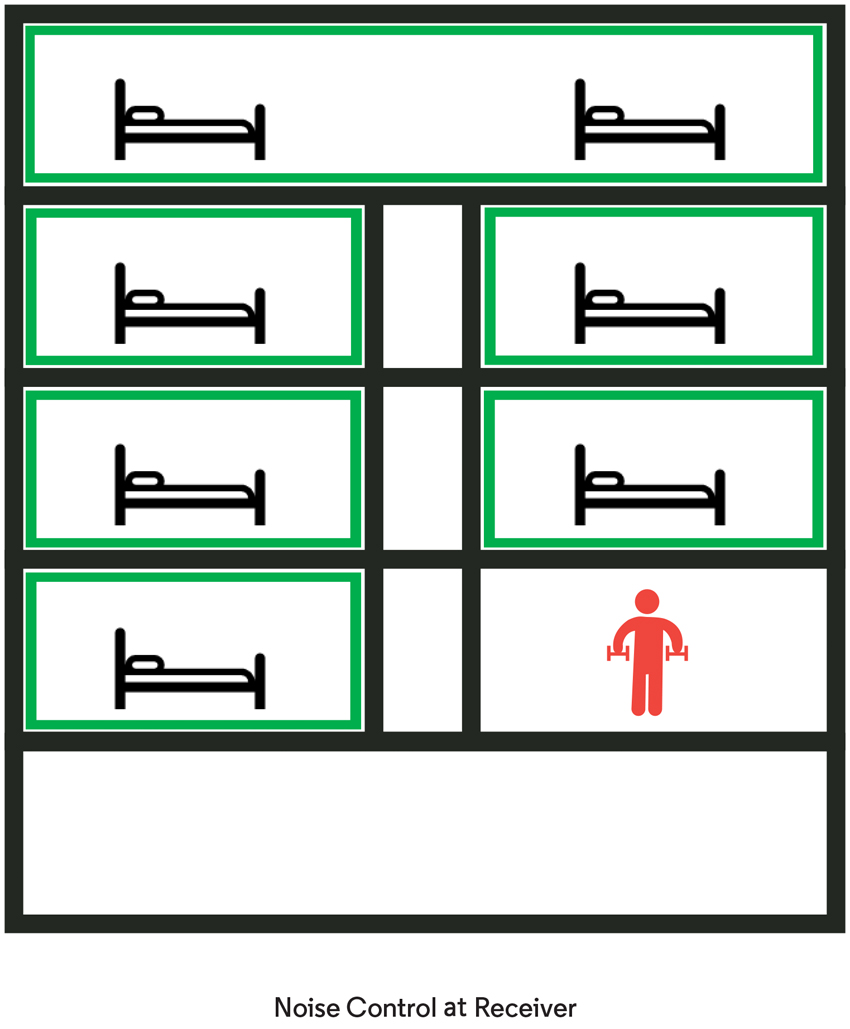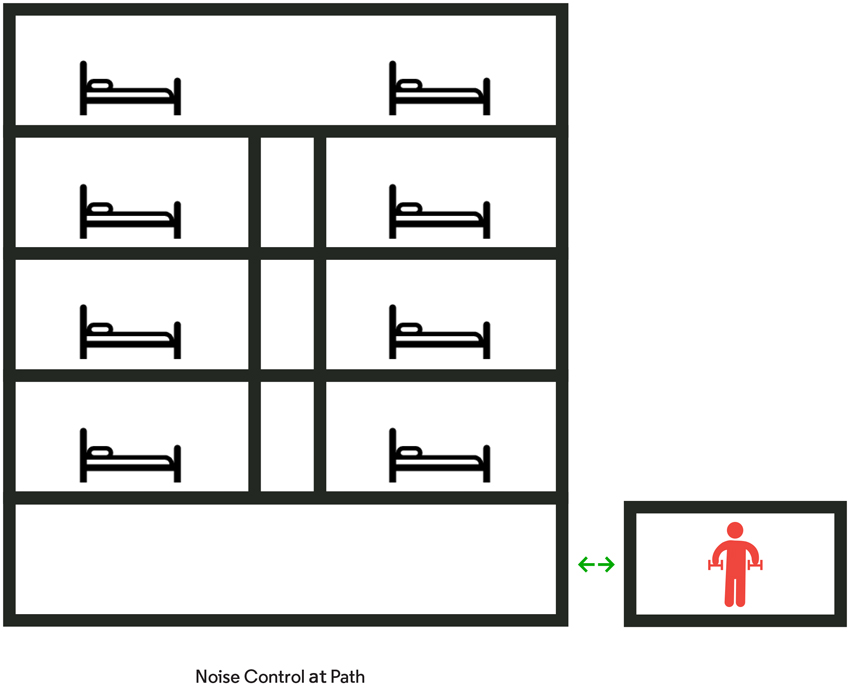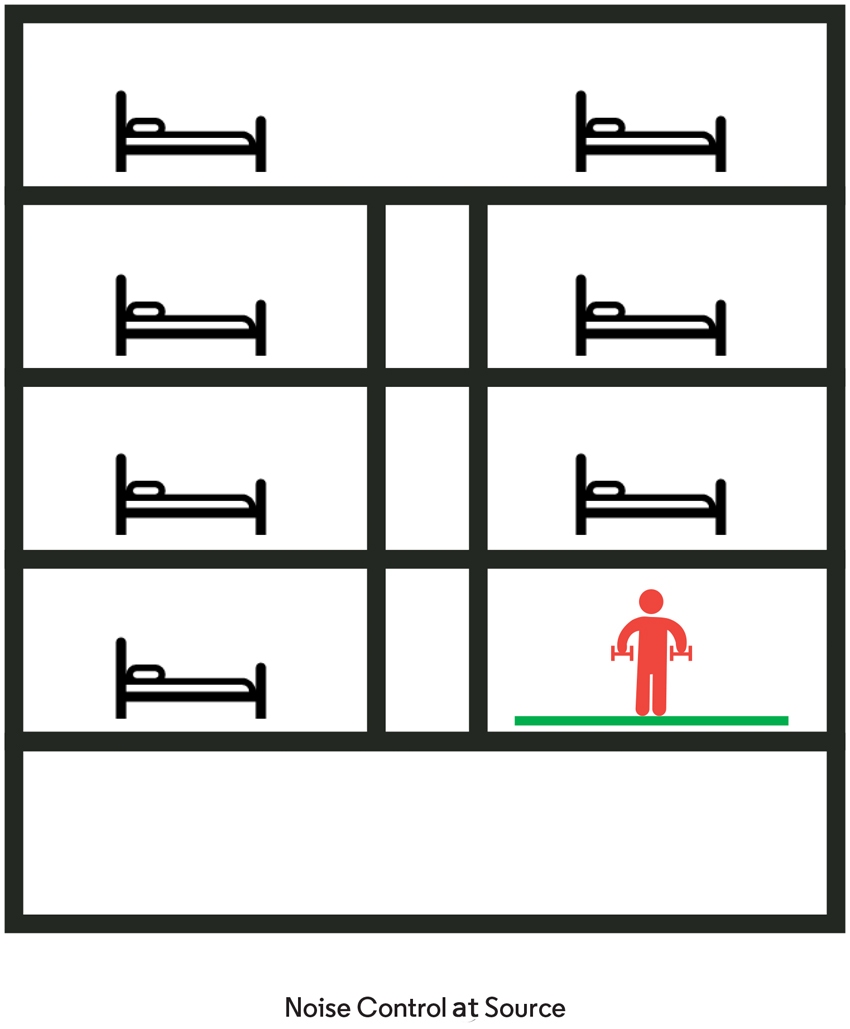Secondhand Noise: Can Flooring Solve the Problem?
Three Ways to Control Noise: Source, Path, and Receiver
When considering how to control noise, consider how sound moves from source to path to receiver. The designer, architect, or specifier can provide noise control:
- At the source of the noise;
- Along the path of the noise; or
- At the receiver of the noise.
Which option makes the most sense depends on where the noise originates, the noise-control measures available, and their cost and complexity.
Some noise cannot be controlled at the source. Consider an apartment building that is constructed along a busy highway. Controlling the noise at the source (noise from cars and trucks) is not possible. This is outside the jurisdiction of the architect or designer. However, this leaves two remaining ways to control noise: the path and the receiver. The freeway noise can be controlled along the transmission path with the construction of a sound wall along the highway. Higher-STC walls and windows are common ways of stopping the noise at the the receiver.
For our purposes, we will discuss sound that originates inside the building. Building-generated noise is well within the jurisdiction of the designer or architect, and a savvy design program can prevent this noise from causing annoyance to everyone in the building or those adjacent to the space where noise is generated. In fact, when properly designed, sound-control measures and products can potentially bring benefits and increased well-being to building occupants for decades.
Consider a gym at a hotel. The source of the noise is the gym user, shown in red in the graphic below. The structural paths for the noise are shown in yellow. The receivers of the noise, represented by hotel room beds, are shown in green. Which option makes the most sense to prevent the noise from the gym user getting to—and causing annoyance to—the receivers?
Let us look at potential noise-control measures for all of these areas.

In this example, the source of unwanted sound is the gym user in a hotel.

Providing impact sound insulation at the receiver is costly and complicated.
Receiver
In a hotel or in multifamily housing, there are multiple rooms, apartments, and condominiums, and thus multiple receivers. The solution to excess noise requires isolating the noise from the recipients. You cannot require occupants to wear earplugs to stop unwanted noise from reaching their ears. And isolating the noise from the recipient by soundproofing all the walls would be complicated and costly. Every hotel room, every apartment, every condo is a receiver that needs to be addressed. This is particularly relevant with heavy weight impacts, such as would be generated in a gym, causing structure-borne sound. The vibration can travel very far, many, many floors up, across an entire floor, and many floors down. The solution requires the isolation of many transmission paths.
In addition, once impact energy gets into the structure and causes the main structural elements to vibrate, everything connected to it is susceptible to the vibration. This includes the vibration of light fixtures, plumbing fixtures, furniture, wall hangings, and many other building elements. Isolating the many transmission paths, the floors, the walls, the ceilings, and everything attached to them is not practical.
Path
Separating the source of the unwanted noise from the receiver can certainly be done with path isolation. A fitness facility, for instance, can be located away from the building that houses the receivers. Put the facility somewhere else, and path isolation is achieved. This is often the solution in suburban multifamily housing situations that are low-rise and spread out horizontally rather than vertically.
But in high-density areas—such as San Francisco, Seattle, Portland, New York, and Boston—land to spread out horizontally is generally not available. So, when the noise generation is inside the building, such as the basement, ground floor, or penthouse, isolating all the potential transmission paths can be complicated and costly, if it can even be done at all.

Isolating impact sound from the building is not always possible in a high-density location.

Providing impact sound isolation at the source is often the simplest and most cost-effective solution.
Source
This brings us to the final option for eliminating unwanted noise: stopping noise at the source. If there is a single source of unwanted noise, and it occupies a relatively small area, which is generally the case with a fitness facility or in-house restaurant or nightclub, isolation of the source of the noise is often the simplest and most cost-effective noise-control option. The same could be said of individual apartments, condominiums, hospital rooms, or rooms in long-term care facilities. Stopping the transmission of sound where it happens is simple and cost-effective.
In this option, one noise source is addressed instead of potentially hundreds of receivers or transmission paths.
Video: The Remarkable Difference that Flooring Makes
To hear the difference that flooring with acoustic performance can make in preventing the transmission of noise, view the video below. The sound engineer in this video plays a music box on a hard surface typical of hard flooring. The sound is both airborne and structure borne. When the music box is placed on a section of engineered flooring with acoustic properties, the radiated noise is strikingly lower.
It is important to distinguish here that the sound is not reflected from the hard surface, but rather the noise is radiated by the hard surface, like a speaker. The acoustic flooring or underlayment isolates the music box from the surface rather than absorbing the sound that would otherwise reflect off of the hard surface.









